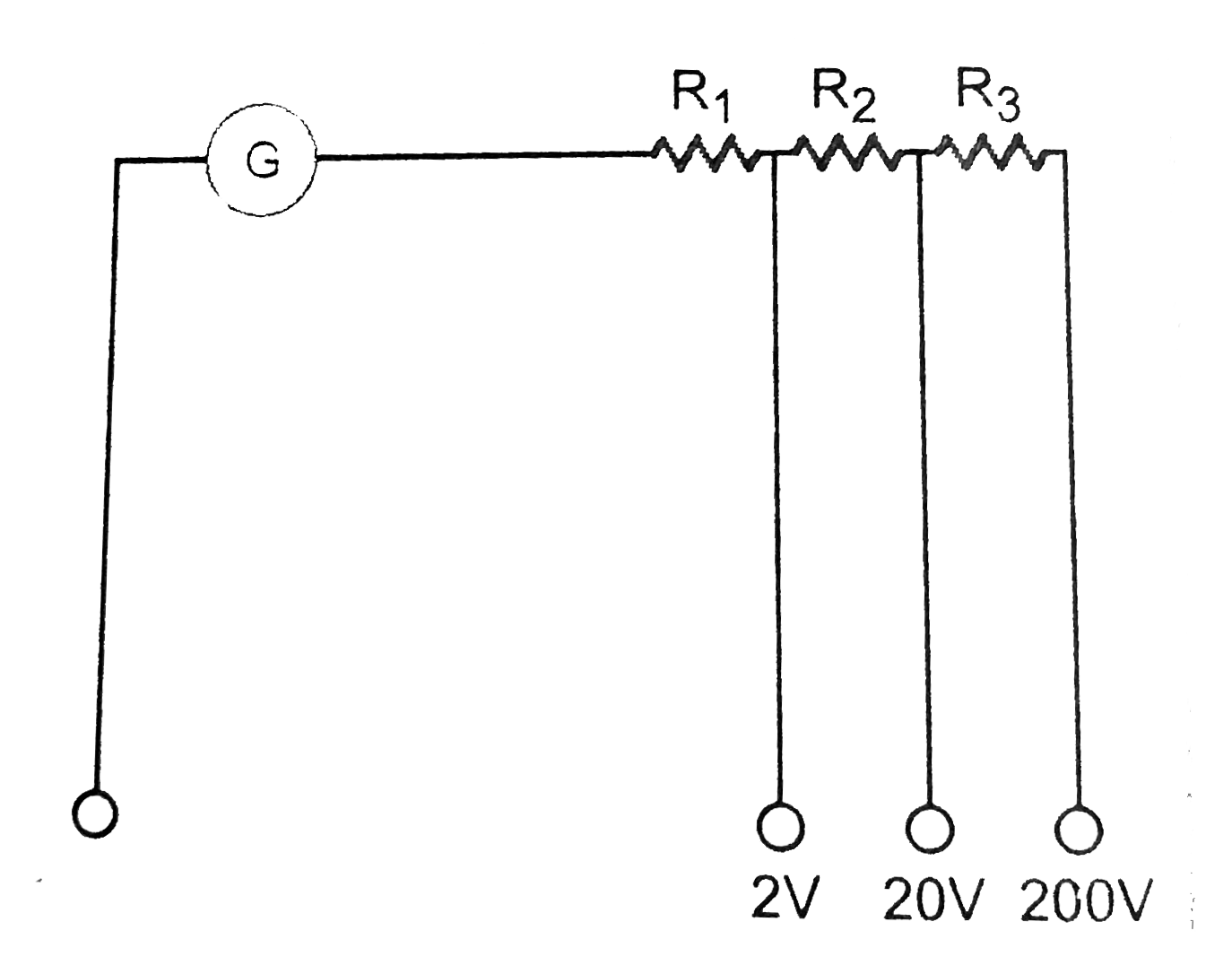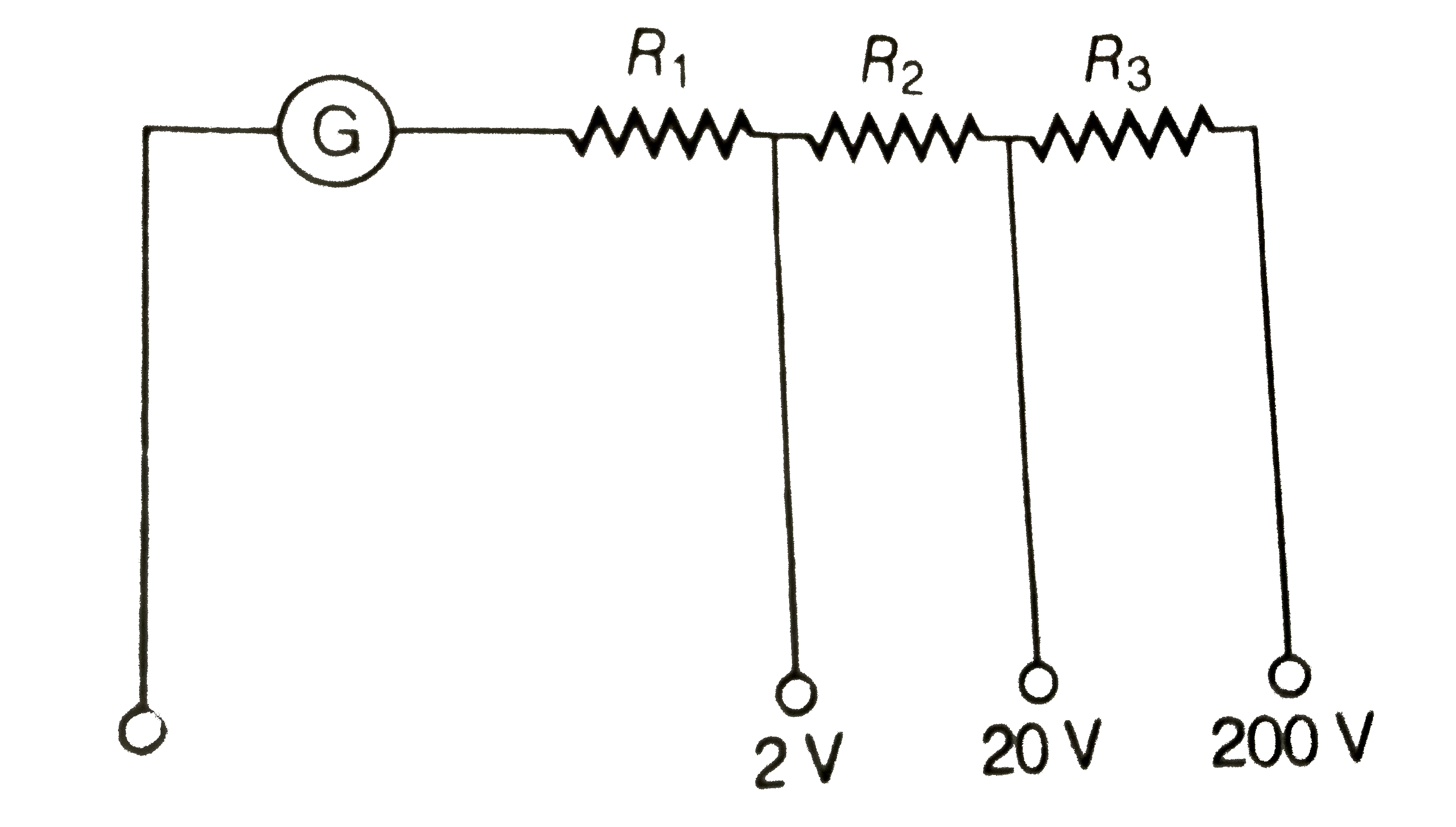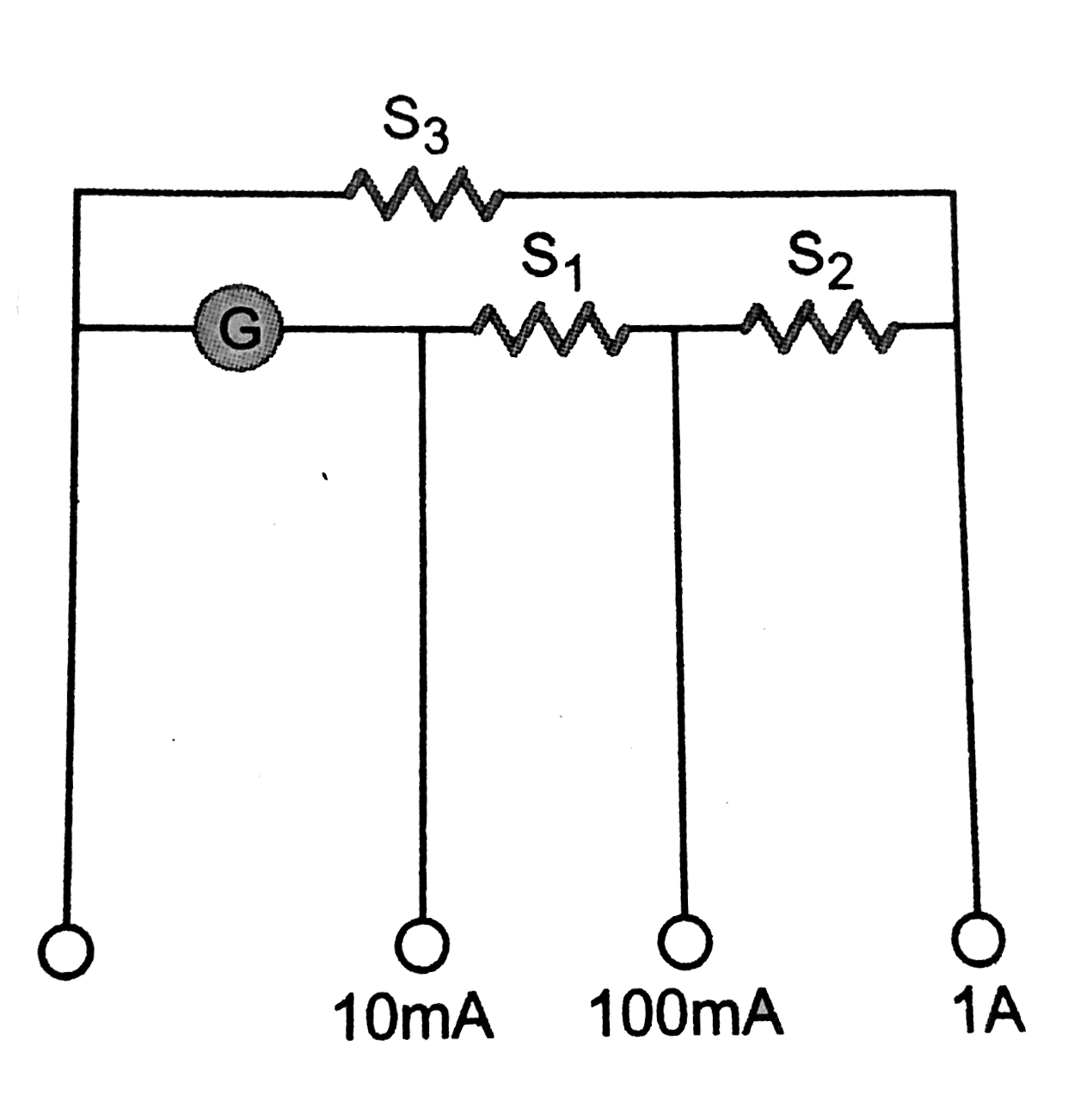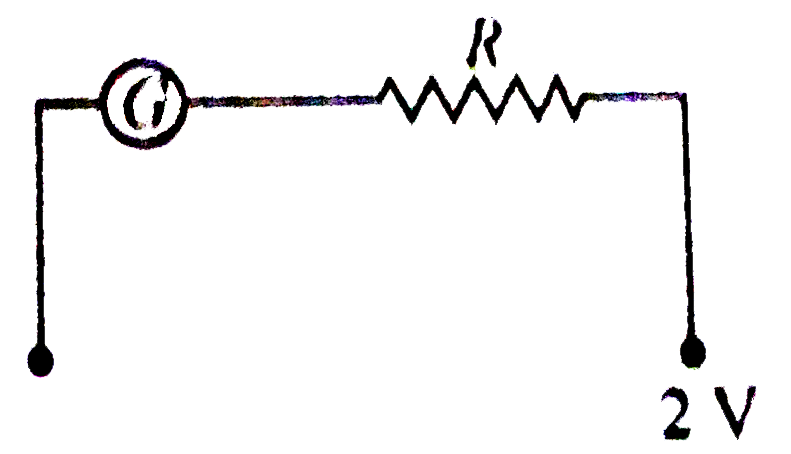A multirange voltmeter can be constructed by using a galvanometer circuit as shown in figure. We want to construct a voltmeter that can measure 2V, 20V and 200V using a galvanometer of resistance 10Ω and that produces maximum deflection for current of 1mA. Find R1, R2 and R3 that have to be used. 
 .
.
Applying expression in different situations ltbr For iG(G+R1)=2 For 2V range
For IG(G+R1+R2)=2 For 20V range ltbr> And for IG(G+R1+R2+R3)=200 For 200V range
On solving we get R1=1990Ω,R2=18kΩandR3=180kΩ
Topper's Solved these Questions
Similar Questions
A multirange current meter can be constructed by using a galvanometer circuit as shown in figure. We want a current meter that can measure 10mA, 100mA and 1A using a galvanometer of resistance 10Ω and that produces maximum deflection for current of 1mA. Find S1,S2 and S3 that have to be used.

View SolutionA voltmeter which can measure 2 V isconstructed by using a galvanometer of resistance 12Ω and that produces maximum deflection for the current of 2mA. Then the resistance R is

View Solution
Knowledge Check
A galvanometer has resistance of 7Ω and given a full scale deflection for a current of 1.0A. How will you convert it into a voltmeter of range 10V
A3Ω in seriesB3Ω in aprallelC17Ω in seriesD30Ω in seriesA galvanometer of internal resistance 100Ω has a full scale deflection current of 1mA. To convert it into a voltmeter of range 0−10V, the resistance to be connected is
A9000 Ω in SeriesB10,000 Ω in SeriesC9,900 Ω in SeriesD9,800 Ω in Series
Hwo can a voltmeter of resistance 200 ohm and measuring 10 V be used tomeasure a current of 5A ?
View Solution" A galvanometer of resistance "20" ohm suffers full scale deflection for a current "20mA" .It can be converted a Voltmeter of range "200V" by "
View SolutionA galvanometer has coil resistance 30Ω and full deflection current of 2mA. What resistance is needed to convert it into a voltmeter of 0.2V range.
View SolutionCalculate the value of resistance needed to convert a galvanometer of resistance 200Ω, which gives a full scale deflection for a current of 5 mA, into a voltmeter of 0-10V range.
View SolutionHow can we make a galvanometer with G=20Ω and ig=1.0mA into a voltmeter with a maximum range of 10V?
View SolutionA galvanometer of resistance 20 ohm suffers full scale deflection for a current 20mA .It can be converted a Voltmeter of range 200V by
View Solution